Encounters with Native American Cultures
Seattle, the largest city in Washington, is named for an Indian chief. Many other features in this area have Native American names. On our travels, we visited several museums and cultural centers that helped to build our understanding of and respect for the culture.
Our first museum was in Coulee Dam on the Colville Indian Reservation, in north-central Washington. The Colville Confederated Tribes Museum has a good historical record of the tribes with many old pictures, examples of clothing and accounts of the lives of their ancestors.
Like all of the Indians in this part of the country, salmon played a key role in the lives of the Colville. Also like other tribes, its whole world changed when it began interacting with societies from other parts of the world. The Colville Indians lost their salmon when the Grand Coulee Dam was built in the 1930s. For the Colville, salmon were not just food; salmon also played a role in their stories and legends, which were the basis of their culture.
Below Grand Coulee Dam is the Chief Joseph Dam, which is on the border of the Colville Indian Reservation. Chief Joseph was from the Nez Perce Tribe. He was a peacful man, making agreements with the U.S. Government to move his tribe to a reservation.
When gold was discovered on the reservation, the government wanted to move Chief Joseph to a small part of the original reservation. Young Nez Perce warriors resisted and raided white settlements. This set off a chain of events that had the U.S. Cavalry pursuing the 700-member band for an extended time before Joseph's surrender.
Chief Joseph surrendered expecting to be able to seek out members of the tribe, which had been lost in the extended fighting. Instead, he and the rest of his tribe were taken to Kansas and then Oklahoma, where they stayed until 1885. Many members of the tribe died in Oklahoma before they were allowed to return to the Pacific Northwest. They never were allowed to return to their homelands, ending up on what is now the Colville Reservation.
Further down the Columbia River, the Wanapum and Chief Joseph Dams were built on the lands of the Wanapum Indian Tribe. Wanapum Dam visitors center hosts a Wanapum Heritage Center with a record of the history and culture of the Wanapum Indians. The Wanapum were moved from their homes so the Priest Rapids Dam could be built. Their historic homelands and homes were flooded by the lake backed up behind Priest Rapids Dam.
One of the things said by Rex Buck Jr. at the dedication of Priest Rapids Dam, still haunts me. Rex Buck Jr. was awarded the Peace and Friendship Award by the Washington State Historical Society for his efforts to advance the cultural diversity of Washington State. He said to the crowd that day, "What we do to the Earth, the Earth will do to us."
The Wanapum continue to follow some tribal traditions today, gathering roots and berries and fishing for salmon as permitted by Washington State law. They also operate an outreach program for schools and the community to bring them information about their culture.
A while later we ventured onto the Olympic Peninsula. Louise wanted to start in Hoodsport and see the eastern side of the peninsula.
After about three days touring, we learned of a celebration that would happen during the weekend. A gathering of the Pacific coastal tribes would begin with the Paddle to Squaxin. Traveling in their ceremonial and war canoes, the coastal tribes would come to Squaxin Island in the Olympic Peninsula. The Squaxiin tribe would host a meeting and potlatch on their home grounds. The canoes would arrive in the port at Olympia, Washington and the public was invited.
We arrived shortly before noon and rode the shuttle to the port. A crowd of hundreds were there to welcome the canoes as they came into port. In the stands reserved for tribal members were drummers, chanting to welcome the arriving canoes.
One by one and in groups of a dozen or more, canoes with three to 30 tribal members paddled their canoes into the port. Some wore ceremonial masks, others wore T-shirts. Most had painted ceremonial canoes and the native form of pointed paddles. Rowing in unison and periodically raising their paddles vertical above their heads in salute, they passed the crowd and then lined up along a roped area for their formal approach and request to land.
I took many pictures of the first canoes, then learned that 94 canoes were expected. Even with my digital camera I had to re-evaluate the number of pictures I was taking. Besides my main 4GB card, I had an additional three 1GB cards. All but a few MBs remained at the end of the day.
The procession of canoes was a spectacle to behold. Canoes from up the Canadian coast -- and another canoe was even flying an Alaskan flag -- came into port that day. We talked with some of the participants on the shuttle back to the parking lot. We let them know that how moved we were by the cultural display and that we appreciated being able to observe this pageant.
We continued to the northern Olympic Peninsula. While visiting friends on Vancouver Island we visited an art gallery in Tofino. Later in an art shop in Duncan, we found several native art pieces, which we purchased for gifts. We also picked out a wall hanging for our home in Texas. Returning to the Olympic Peninsula, we continued to learn more about the tribes of the northern peninsula.
Moving to the community of Forks on the northwestern side of Olympic National Park, we visited several tribal communities. The Makah reservation is located at Neah Bay and includes Cape Flattery, the northwestern tip of the Olympic Peninsula. To the south their original village, Ozette, was buried by mud flows. The tribe relocated to Neah Bay. Years later, beach erosion during a storm exposed the village in Ozette. Excavations of Ozette village has yielded many artifacts from pre-contact days. Those items, which provide a record of the civilization that existed before Europeans arrived around 1790, are housed in the Makah Cultural and Research Center in Neah Bay.
Another native village is atLa Push on the Pacific shore west of Forks. In 1889, their homes were burned by a settler seeking to claim their territory for his own. All of their ancient masks and cultural records were lost in the fire. Today the Quileute tribe has a resort and RV park on the coast. With beaches of Olympic National Park to their north and south, the Quileute tribe has the land around the mouth of the Quillayute River.
The Quileute tribe was the most welcoming of all the tribes we encountered. Each Wednesday night, the tribe has a drum circle and potlatch and the public is invited. Louise and I joined them one night. We were invited into the circle and were welcomed repeatedly. We watched, listened and were invited to join in their drum circle. The men with sacred wolf masks danced in the center of the circle as the ladies danced around the perimeter. The ceremony was very stylized, and by observing, we could detect behaviors of dancers that were part of the ritual dances.
We left that evening feeling like we had a real connection with the Quileute people and their culture. Several days later we returned to find David Wilson, carving teacher at the Quileute school. Visiting with David and his wife, Anna, we saw some of his works of art. He has carved 20-foot-high totems and ceremonial staffs, canoe paddles and many other fine works of art. We discussed a small totem with him and came up with a design. He is currently working on carving that totem for us.
Throughout our visit to the northwestern United States, we have encountered the Native American culture and have learned much from and about them. Uniformly they have welcomed us, sometimes personally, at other times through their celebrations, museums and cultural centers. Here are a people who have endured many injustices and have had their culture strongly altered in a relatively short period of time.
Despite the forces that have thrust them into the modern era, they continue to be friendly and open to the outside world. Perhaps they remain too innocent in their approach to the outside world. I believe they are representing their culture to the rest of the world in the best possible way. To observe their customs and culture, one can not help but come away with admiration and respect for them and their struggle to cope with the changes thrust upon them.
Since our travels into Canada years ago, Louise and I have used the term First Nations as a better descriptor for those who were here before the rest of us. After all, 350 million of us have moved in on their territory and proceeded to tell them where to live, how to live, what language to speak and what to believe. We owe them a great deal of respect. Perhaps we can even support them in their efforts to recover their native languages, customs and culture.



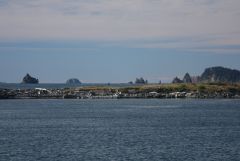
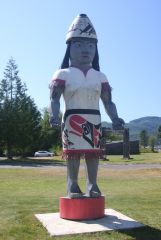
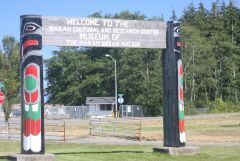
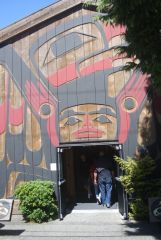
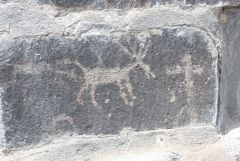

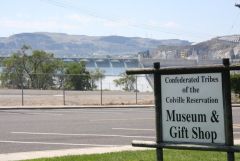
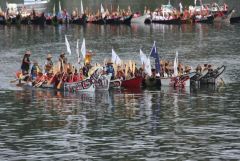
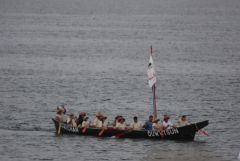
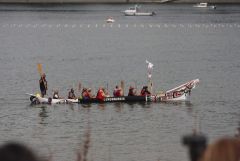
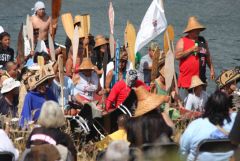
2 Comments
Recommended Comments
Please sign in to comment
You will be able to leave a comment after signing in
Sign In Now